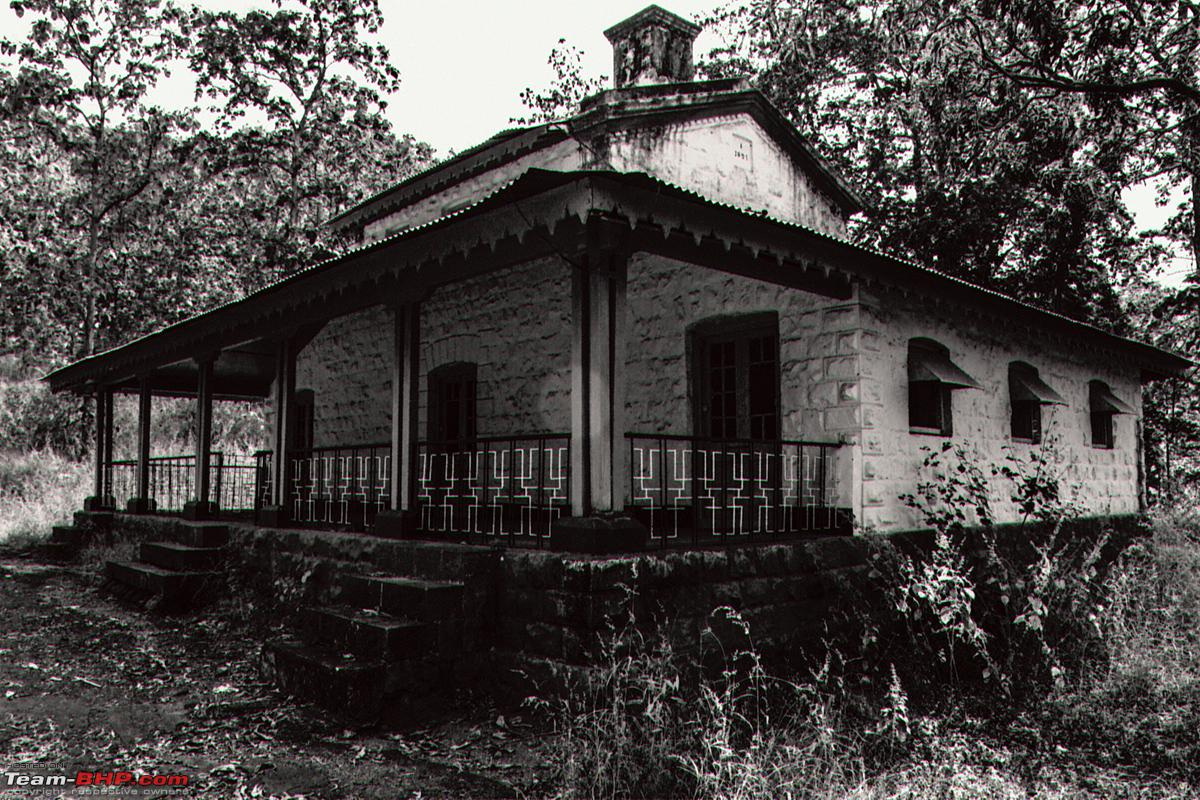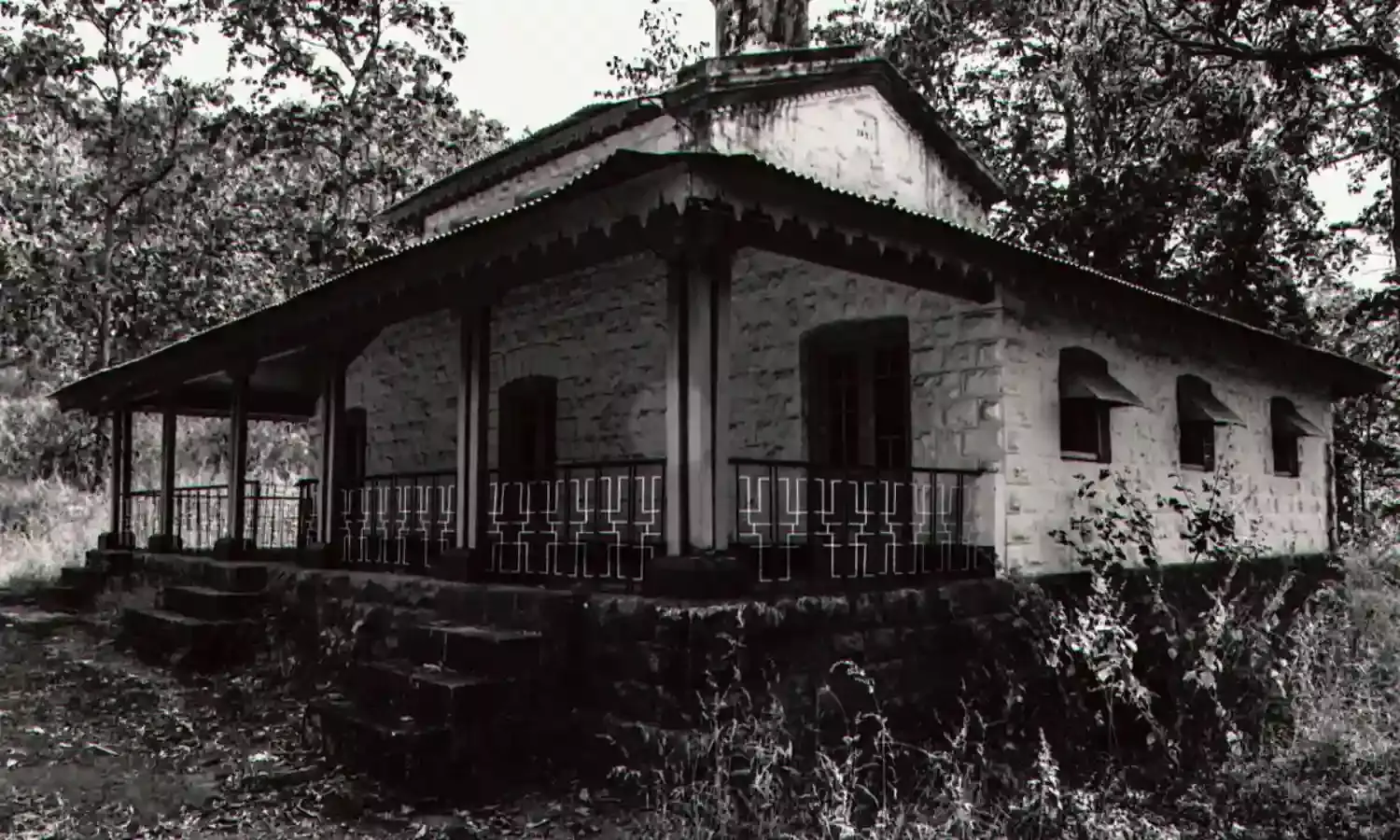The Dak Bungalow
A sword duel and the end of three souls
There…there…there she is!
Zeenat Biwi is walking in the sal forest unmindful of two men waiting to kill her.
After four days wait, the murderers Kallu Khan and Binda Singh have finally found their chance. Neither Lt Hudson follows her from behind the trees nor is the old maid Jaddan by her side.
But why would they want to kill Zeenat Biwi?
The answer to that question is a story full of tragedy, twists and turns. To tell it we will have to go the ruins of a Dak Bungalow built around 1842, nearly 50 years after the murder.
One of many built in and around Dumka, Jharkhand, little of that Dak Bungalow remains.
Three decades after the Battle of Buxar in 1764, Lord Cornwallis, Governor-General of Bengal, was fighting intensely in Bengal, Chotanagpur, Bihar and Orissa to expand the East India Company.
In the process the British raided the home of Muhammad Ismail, a Zamindar with a small fief near Kathikund, a little away from Dumka. In the skirmish, Ismail was defeated but was allowed to rule if he paid an annual tax to the Company.
The woman they will kill tonight is Ismail’s sister, who married a British officer against her brother’s wish.

Sitting on the ruined railing of that Dak Bungalow in an Indigenous village with the Hijla Pahari (mountain) lying yonder, I was engrossed by the tale of Zeenat and two Firangi officers of the East India Company told to me by Benjamin Kisku, a local man.
Dak Bungalows, old railway stations, the ruins of Havelis, ancient bungalows of Firangi indigo planters and lighthouses on the shore of the sea always attract me. Each has its own unique story: often shot through with Bhutaha or the ghostly ones.
Such stories speak of murder, lunacy, duels, suicide, love, hate, betrayal and conspiracy hatched against Rajas and Nawabs in times bygone.
So it was that the ruins of the Dak Bungalow in Hijla Pahari attracted me during my revisit to Dumka, a town where I studied in school and the first year of college.
It was in 2014 that I went to Dumka on election news coverage as a newspaper reporter.
While in Hijla Pahari, I chanced to see that ruin, and on enquiring I was told it was that of an ancient Dak Bungalow, and my curiosity was piqued. Earlier I had seen many Dak Bungalows, mostly in ruins, in Jharkhand, Assam, Madhya Pradesh and West Bengal.
In fact, such ruined Dak Bungalows dot the countryside in the thousands in India, Bangladesh and Pakistan. Practically all the cities, roadside villages and deep jungle interiors in these three countries, formerly one, can you find their ruins.
Of course, some Dak Bungalows offer a new look today, and people also live there.
What would they have been like in Kipling’s days?
Well, like Rudyard, his father Lockwood Kipling too described the Dak Bungalows, though in a less flexibly beautiful manner than Kipling Junior would have done. He wrote that “they were as handsome as a stack of hay, with an irreducible minimum of accommodation”.
Kipling Senior was right. Even the ruins of the Dak Bungalow where I was sitting with Benjamin Kisku lived up to Lockwood’s description of these austere short-purpose stay abodes. The ruined structure fitted with his description of Dak Bungalows.
Its relic of redbrick and mortar reminded me of the ghostly Dak Bungalow described in ‘My Own Ghost Story’ by Rudyard Kipling.
I curiously asked Benjamin if it had a ghostly tale to tell.
Benjamin replied in the affirmative. And I grew very curious indeed.
In fact I wanted to try the strength of Kipling’s claim.
He really was right. Can you believe there still are a few Dak Bungalows and at least ten haunted railway stations in India having ghostly touches?
Take the squat little Begunkodor Railway Station located in Purulia, West Bengal. Constructed in 1960, it was considered haunted and closed down in 1968. It was only in 2007, when Mamata Banerjee was railways minister that it was reopened.
But it is still known as a station of ghosts.
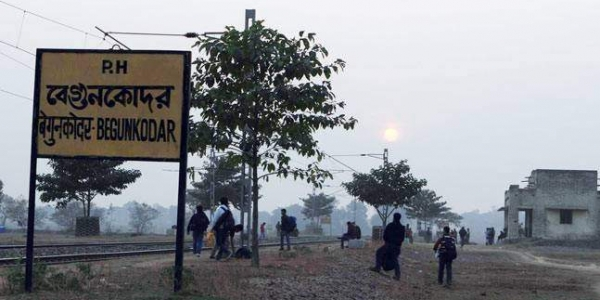
Well, what about the ghostly affairs of the Dak Bungalows?
It was around 1838-39 that the Governor-General, Lord Auckland, ordered the building of such rest houses for the movement of Dakia or runners with postal bags of letters, and for British officials going from one place to another.
Located in very remote corners, and some in the middle of jungles and in lonely foothills, ghost stories abound in them. Some are specially known for housing lunatic ghosts.
Kipling wrote: “A ghost that would voluntarily hang about a Dak Bungalow would be mad of course; but so many men have died mad in Dak Bungalows that there must be a fair percentage of lunatic ghosts.”
Lunatic ghosts? Are we getting it right?
Call it coincidence but many Firangis like General Douglas did indeed behave in a lunatic way while staying in certain Dak Bungalows. I do not find any scientific explanation for this but the claim continues in many parts of India.
The ruin of a Dak Bungalow that I saw years back while touring Jorhat in Assam was said to be thronged by some lunatic ghosts who harassed any people prying in the building.
Lunatic ghosts are also said to be readily available in one such Dak Bungalow located deep inside a forest near Thalkobad in Jharkhand. But it is the Damoh Circuit House in Madhya Pradesh that’s quite famous for its lunatic ghost.
Well! Let us meet General Douglas. Was he really stuck by a sudden bout of lunacy some 135 years ago while living in the Dak Bungalow, now a Circuit House, in Damoh?
This Firangi apparently had no mundane problems. One night, however, he suddenly shot his wife, two children and himself. After that, it is believed that his lunatic spirit still troubles people.
On another occasion, a Firangi officer with the only problem – loneliness – came to the Chirai Dongri Rest House near Jabalpur, Madhya Pradesh, to take his life. His ghost is still said to be lingering there.
In 1790, Dumka had an army outpost from where the East India Company was fighting against a lot of Rajas, Sultans and Zamindars in and around this place in Santhal Parganas. Several Firangis lived here with their Gori Memsahib and Desi Biwis.
A handsome young officer had just been posted to Dumka from Rajmahal. He was Captain Morris Morrison. Asked to stay in touch with Muhammad Ismail, Morrison often went to his Haveli on official work. On one such visit he chanced to glance at Zeenat, Ismail’s sister.
Morrison was mesmerised by her beauty. After this, he would often go to Ismail’s house on various pretexts. And Zeenat too fell for him.
Now Zeenat is moving in the Sal forest. There, there…there she is.
Without a moment’s delay, Kallu caught hold of her hands and Binda slit her throat.
Their killing mission is over!
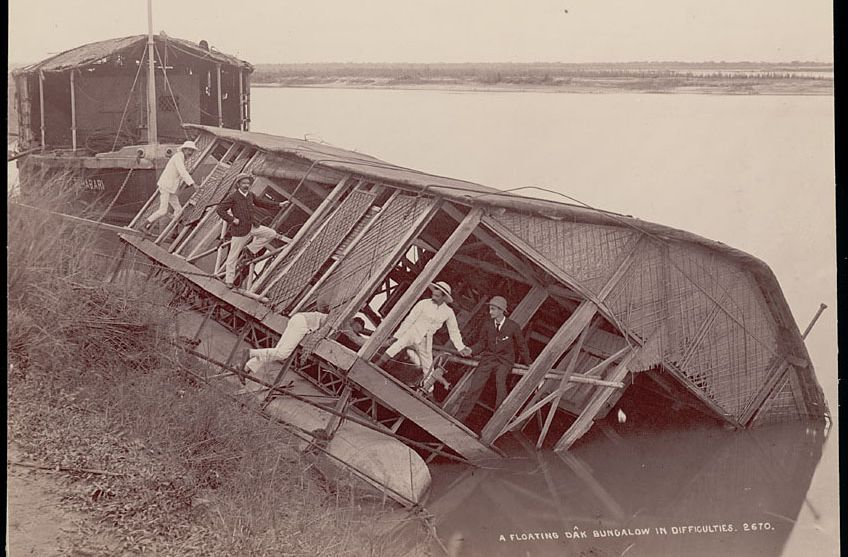
Capt Morrison and Zeenat Biwi knew Muhammad Ismail would never allow their marriage. What could they do?
An escape plan was woven as Morrison decided to bring Zeenat to Dumka to marry her. She would continue to follow her religion.
On one Jumma - Friday - when Ismail and other men of the zamindari households went to the local mosque for prayer, Zeenat and her maid Jaddan stealthily left the haveli to meet Capt Morrison waiting with a horse cart in a jungle nearby.
Soon after reaching Dumka, they married each other in both the Christian and Islamic traditions.
Ismail decided to kill Zeenat as she had brought disgrace to the zamindar family.
The days rolled into weeks. Weeks into months. They were very happy. One day, Lt John Hudson came to Capt Morrison’s residence on some official assignment. There, he saw Zeenat and felt he could not live without her.
But he could have Zeenat only after the death of the Captain.
As frequent evening parties are held in army clubs, one such event took place on a Sunday soon after.
The night was rolling and the party was in full steam. Zeenat and some other desi biwis of the British officers were seated at one corner of the club. They had nothing to do. They hated the Firangi Sahibs and Memsahibs dancing while holding each other’s hands and waist. They disliked the Memsahibs drinking wine.
Hudson was not dancing but sitting at a little distance, watching Zeenat. Morrison was dancing. After getting bored, apparently, Zeenat stepped outside in the garden. Hudson, always searching for opportunities to talk to her, followed.
He hurried to her side in the garden of the army club. He came up to just beside Zeenat to whisper “I will shower all luxuries upon you if only you desert your husband and come to me.”
Zeenat was outraged and ran back inside.
What could happen next? Hudson knew Zeenat would tell Morrison everything. And after that?
A duel, of course!
Early in the morning next day, Zeenat told Morrison everything.
He said nothing but strode to the house of Lt Hudson.
"I challenge you, Sir, to a duel…”
“Sir, I accept…any time, any day…any weapon.”
Next morning, the two men and their seconds met in the forest nearby. Their horses were tied to a tall saal tree that had witnessed many a duel and swordfight over the past decades.
Tranquility prevailed. Even the falling mahua and sal leaves could be heard, it seemed. The grove-koels were cooing, quite unmindful of the impending bloodshed. Occasionally, dogs would bark in distant jungles.
They were ready.
One of the men raised his right hand and dropped the kerchief to signal the start. Just as it touched the ground, Hudson and Morrison took their defence positions, the most important aspect of a duel.
The duel began.
Morrison moved first, putting Hudson on the defence. But an alert Hudson took the sword thrust with supreme ease. Morrison rushed at Hudson, lacerating his left leg with the sharp blade.
Though writhing in pain, Hudson menacingly advanced towards him caring little for his own life. He was absolutely desperate. Now Morrison found his rival too close to him for any further defensive maneuver.
Their swords moved with lighting speed. Suddenly, Morrison shoe skidded on the dew-wet grass.
He stumbled. He fell. Hudson advanced like a man possessed by some supernatural being, and without giving any opportunity to Morrison to even raise his sword, Hudson ran the sword through his heart.
The body of Morrison shuddered a little. He lay still on the grass. Hudson too was profusely bleeding. The duel was over. Zeenat had lost her lover.
When she saw his body she fainted. Later she remembered nothing.
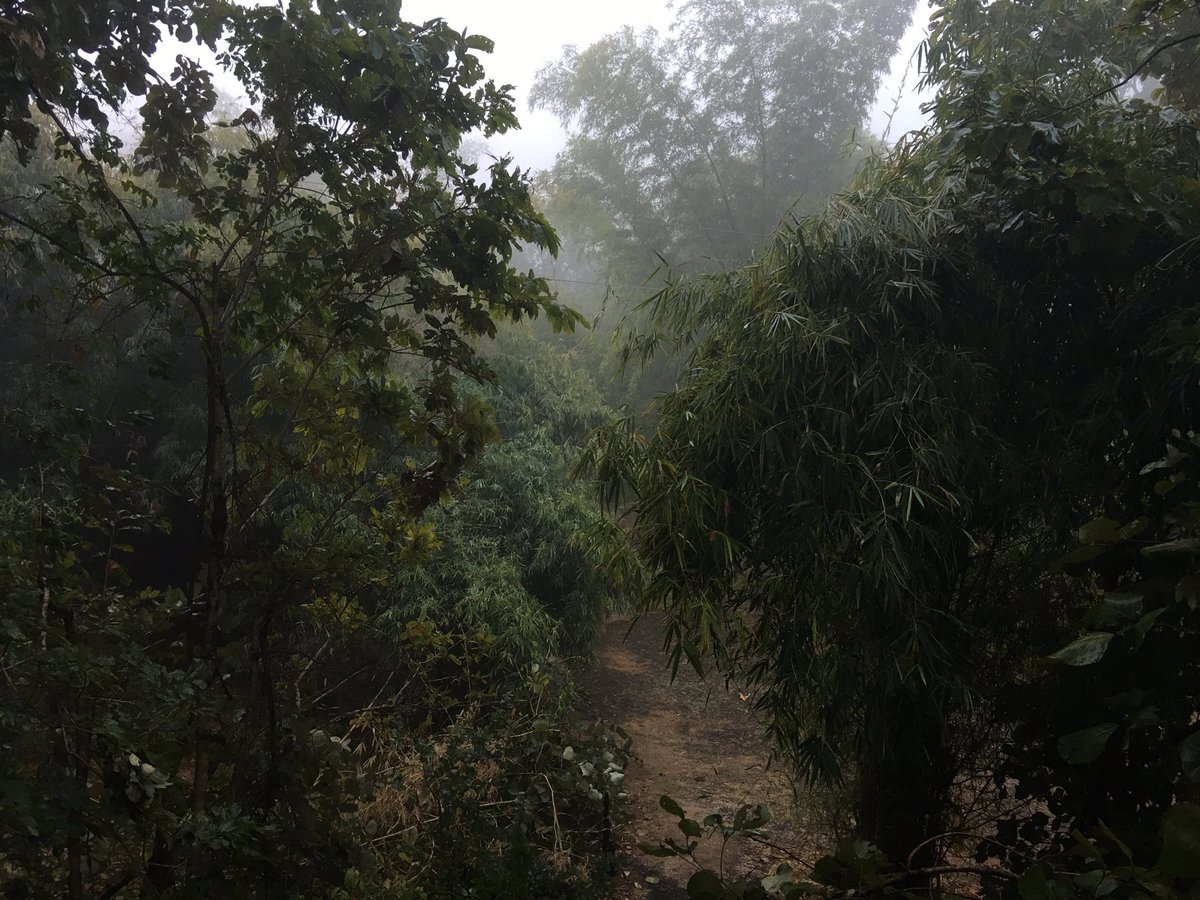
Years later, a Dak Bungalow came up at the spot where the duel was fought. Much before that, the tribals going into the forest at night would see shadowy creatures looking like a woman and a Firangi man in army uniform.
After the Dak Bungalow came up, people still saw such silhouettes.
“But Benjamin! What happened to Hudson…?”
Hudson was never the same man again. Often he would be seen riding towards the Hijla Hills and standing for hours on end at the spot where he had fought the duel. He would go to the Santhal village and ask for Hadia, a very strong local brew.
After his fill he would dance like a wild man.
He had lost his senses… somewhat like Zeenat.
A Hukumbardar or attendant was ordered to follow him everywhere.
One night, Hudson left his house. He walked to the sal tree where Zeenat’s body was found, slain at the hands of Binda Singh and Kallu Khan. The Hukumbardar watched him from a little distance.
Hudson sat down beneath the tree. Suddenly, he started talking to himself. “Zeenat! Dont look at me like that! Why don’t you come and sit down beside me?” Hudson was shouting. He was waiving his hand at somebody though there was no one there.
Witnessed by the Hukumbardar, he suddenly took out his revolver, pointed it at his forehead and pulled the trigger.
A single shot! He lay still in the grass!
Kipling was true. Every Dak Bungalow has ancient ghostly tales woven around it.
